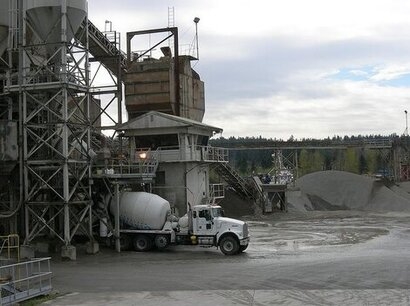
Currently there is a lack of clarity with regard to cement production in terms of just where production will rise, where it will fall and where it will decelerate. This report attempts an economic model which shows all of these adjustments.
Global cement demand is going to continue increasing over the next few decades as developing countries like India, Indonesia and Vietnam urbanise and continue bringing more of their population into cities as they grow through industrial expansion. By contrast China will slow its rate of usage of cement, as its GDP growth begins to slow.
If green approaches do not become deeply entrenched within the cement industry, then emissions will naturally rise, as overall demand will continue rising slightly when looked at globally.
The biggest concern is that cement is used to bring nations out of poverty. Poor nations are not inclined to spend R&D dollars on designing new green cement processes and will have to import the technology – either through buying from western equipment suppliers or with western donated funds, particularly in Asia and Africa.
Renewable energy companies can use this opportunity to partner with cement companies to create industrial heat from solar or wind generation alongside a storage medium to address intermittency. The opportunity to create dedicated renewable microgrids for cement companies to lower their reliance on finite and volatile fossil fuels like natural gas and coal, should be pursued as a matter of priority. Renewables firms that create those partnerships now, will reap significant rewards over a 30 year time period.
The shift towards green cement is going to shift electricity demand from fossil fuels and towards renewable energy production, particularly as carbon taxation systems are introduced to the industry. And with legislation going through Europe now on the Border Adjustment Mechanism, everyone’s exports will be affected by carbon taxation, regardless of whether or not a particular country has a law on carbon tax.
The large energy requirements of cement plants along with the 24/7 nature of production makes getting rid of fossil fuels difficult, but with the rising price of fuels like natural gas it’s becoming increasingly economical to replace the burning of natural gas with electrolysed hydrogen which won’t suffer from intermittency issues so long as storage facilities are implemented nearby.
Hydrogen also avoids the issue of using electricity directly to generate heat and the associated energy efficiencies, while some companies such as Sublime (US Sublime Systems) and Finland’s Coolbrook Oy, claim to have ways to use electricity to either achieve the required high temperatures or circumvent them, this still provides additional avenues for energy generation and storage companies due to the size of cement production operations and the necessity of a reliable energy supply.
For additional information:
“Is the global cement business sufficiently motivated to go green?” Executive Summary

